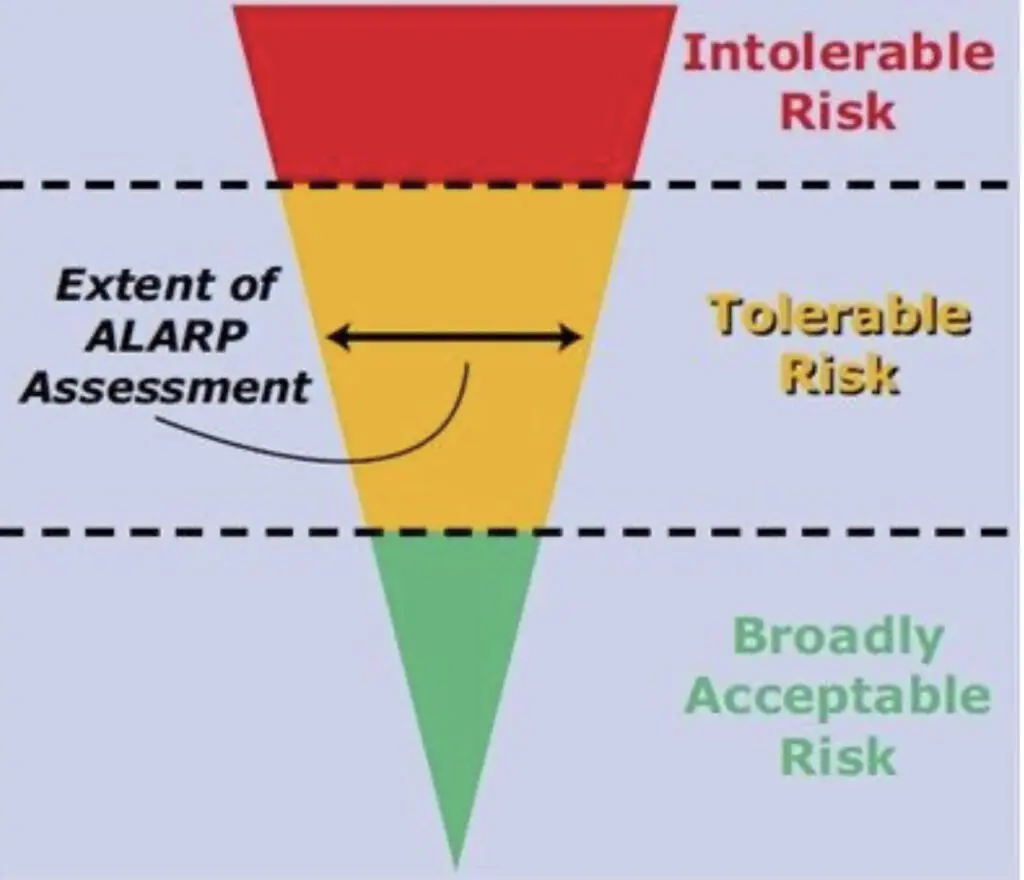The Weekly Reflektion 16/2023
The project “Development in risk level – Norwegian shelf” (RNNP) was initiated in 1999 and is an annual review of indicators that show trends related to risk and in particular major accident risk. Risk reduction is a stated objective for the industry and all the participants are committed to contributing to this objective. There is however a recognition that the lower the risk the harder it is to achieve further reductions. The law of diminishing returns also applied to the petroleum industry.

How low does risk have to be before we are satisfied that we cannot reduce further?
In last week’s Reflektion (week 15/2023) we discussed the presentation of the RNNP-2022 report 30th March 2023. The presentation is available on the Petroleum Safety Authority (PSA) website. We did receive feedback on the Reflektion,and this was related to the whether the major accident risk level was at ALARP, as low as reasonably practicable. The resultant discussion led us to ask the question, ‘How low does risk have to be before we are satisfied that we cannot reduce any further?’ We attempt to answer this question in this week’s Reflektion.
Our approach is firstly to address the application of ALARP. The ALARP principle is used in the assessment of risk associated with a specific project or activity and is fundamental to the way risk is managed. The two criteria for an ALARP assessment are that the risk is reduced to as low as reasonably practicable, as implied in the definition, and that the risk is tolerable. Tolerable can be determined subjectively or objectively and in both cases, there should be clear criteria for the determination. The main point here is that a risk can be as low as reasonably practical yet not be tolerable and hence not acceptable.
In our view ALARP is not a suitable criterion for answering our question on major accident risk for the industry for the future. We should always try to reduce major accident risk irrespective of the level of risk achieved. History has shown us that it is only by attempting to be better that we can at least maintain the standards that have been achieved.
At the RNNP presentation Peter Sabel from Tekna made some interesting points that are worth following up. He encouraged the participants in the industry to take time to study the RNNP-2022 report and try to understand its implications. Compare the information and trends in RNNP-2022 with the indicators and signals within your own company and identify your own challenges. Discuss these challenges and identify specific measures that are appropriate for you. Sabel also made an important point on the use of the ‘lagging’ indicators that make up the RNNP-2022 major accident risk indicator. ‘We do not drive by only keeping our eyes on the rear-view mirror’.
One of the key messages that came out of the RNNP-2022 presentation was differences in performance between companies and between installations. If anyone is ‘better’ than anyone else, then there is a learning opportunity. In our Reflektion in week 10/2023 we highlighted the use of Peer Reviews to stimulate learning and experience transfer and develop best practices and we would advocate more Peer Reviews in specific area related to Major Accident risk. There is also an opportunity for PSA with their knowledge across the industry to take a lead and contribute to learning and experience transfer.
Reflekt will organise our first live breakfast seminar post COVID on Wednesday 3rd May at Ipark in Ullandhaug, Stavanger. Follow our website for more details. www.reflekt.as
